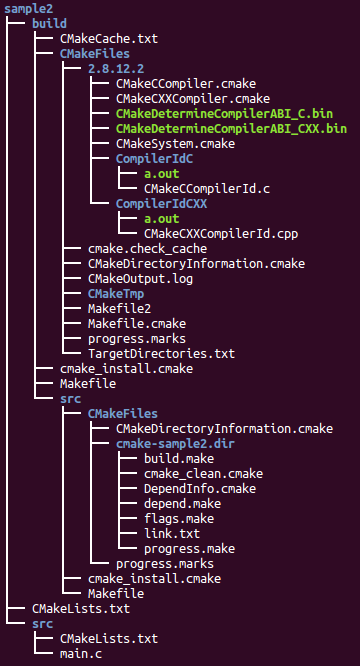

#Make vs cmake code#
Start VS Code and display the extensions panel (select View → Extensions from the main menu). When it is completed, run the downloaded file. Select the appropriate version click on the Windows button for the 圆4 version, or one of the ARM links for ARM if that is applicable to you.
#Make vs cmake download#
On Windows, the latest version of Visual Studio Code is available on its download page. Installing Visual Studio Code and Extensions In a later article, I will discuss using the gnu tools on Linux (Ubuntu). I will start the project on Windows using VS Code and the Visual Studio Build Tools, but if you wish, you can start with a different IDE, or even a different operating system. Just about any tool that can be downloaded from the internet, and which provides CMake files for building, can be used. I will show one example of this when I use Google Test in this project. With CMake, you can download, build, and use a large number of tools. You will see this when I port my project from Windows using the Visual Studio build tools to Linux using the gnu build tools. Aside from specifying the tools to use, no other changes are required to the CMake specification files. You can specify the build tools that you want to use for example, you can use MSVC or LLVM on Windows, and gnu or LLVM on Unix-like systems, including Linux, OSX, and MSYS or MinGW. Because it can be called from the command line, it integrates well with continuous integration/continuous build systems. It can even create make files if you want to do everything from the command line. Similar capabilities are available for every other popular IDE. For example, CMake can generate solution (.sln) and project files (.vcxproj) that Visual Studio and Visual Studio Code use on Windows. CMake then takes that information and generates the files needed to build the system.

#Make vs cmake how to#
You specify what you want done, not how to do it. Why Use CMake?ĬMake is a powerful and robust build system.

Most of the information is applicable to using almost any IDE, or indeed, no IDE at all. I will also use git and Google Test, and port the project from Windows to Linux. There was even one that was entirely stateless, but it was also too inflexible for most real builds.ĬMake very carefully walked a thin line that dodged all these issues and the fact it is a giant pile of global mutable shared state simply doesn't for all but the largest builds.In this article and several more, I will be discussing developing a very simple C++ library and application using CMake and Visual Studio Code. Then then there are the build systems you didn't mention, but the minimalistic ones. Scons never worked with IDEs I liked, Know how to get it cowkring with QtCreator? Other will demand vs2015r3 integration, how do you do that? If your build system doesn't seamlessly integrate most then it couldn't have made it. There are zealots for every IDE and some IDEs require special project files. I think this kills any other language as a build tool. Either a specific version was needed for something else and managing the dependencies was a pain or we were already reliant on other scripting languages. I have been in places where demanding python just wouldn't work. I think CMake took off, because it has no dependencies, works with any IDE and can be extended to do anything.


 0 kommentar(er)
0 kommentar(er)
